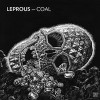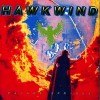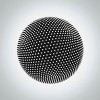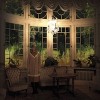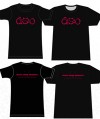"The Jefferson Airplane opened 1967 with Surrealistic Pillow and closed it with After Bathing at Baxter's, and what a difference ten months made. Bookending the year that psychedelia emerged in full bloom as a freestanding musical form, After Bathing at Baxter's was among the purest of rock's psychedelic albums, offering few concessions to popular taste and none to the needs of AM radio, which made it nowhere remotely as successful as its predecessor, but it was also a lot more daring. The album also showed a band in a state of ferment, as singer/guitarist Marty Balin largely surrendered much of his creative input in the band he'd founded, and let Paul Kantner and Grace Slick dominate the songwriting and singing on all but one cut ("Young Girl Sunday Blues"). The group had found the preceding album a little too perfect, and not fully representative of the musicians or what they were about, and they were determined to do the music their way on Baxter's; additionally, they'd begun to see how far they could take music (and music could take them) in concert, in terms of capturing variant states of consciousness.Essentially, After Bathing at Baxter's was the group's attempt to create music that captured what the psychedelic experience sounded and felt like to them from the inside; on a psychic level, it was an introverted exercise in music-making and a complete reversal of the extroverted experience in putting together Surrealistic Pillow. Toward that end, they were working "without a net," for although Al Schmitt was the nominal producer, he gave the group the freedom to indulge in any experimentation they chose to attempt, effectively letting them produce themselves. They'd earned the privilege, after two huge hit singles and the Top Five success of the prior album, all of which had constituted RCA's first serious new rock success (and the label's first venture to the music's cutting edge) since Elvis Presley left the Army. The resulting record was startlingly different from their two prior LPs; there were still folk and blues elements present in the music, but these were mostly transmuted into something very far from what any folksinger or bluesman might recognize. Kantner, Jorma Kaukonen, and Jack Casady cranked up their instruments; Spencer Dryden hauled out an array of percussive devices that was at least twice as broad as anything used on the previous album; and everybody ignored the length of what they were writing and recording, or how well they sang, or how cleanly their voices meshed. The group emerged four months later with one of the rawest, most in-your-face records to come out of the psychedelic era, and also a maddeningly uneven record, exciting and challenging in long stretches, yet elsewhere very close to stultifyingly boring, delightful in its most fulfilling moments (which were many), but almost deliberately frustrating in its digressions, and amid all of that, very often beautiful.The album's 11 songs formed five loosely constructed "suites," and it didn't ease listeners into those structures. Opening "The Ballad of You and Me and Pooneil" (a Kantner-authored tribute to Fred Neil) amid a cascading wash of feedback leading to a slashing guitar figure, the band's three singers struggle to meld their voices and keep up. A softer, almost folk-like interlude, highlighted by Slick's upper-register keening, breaks up the beat until the guitar, bass, and drums crash back in, with a bit of piano embellishment. Then listeners get to the real break, an almost subdued interlude on the guitars, and a return to the song at a more frenzied pitch, the guitar part dividing and evolving into ever more brittle components until a crescendo and more feedback leads to "A Small Package of Value Will Come to You, Shortly." This brilliantly comical and clever percussion showcase co-authored by Spencer Dryden and the band's manager, Bill Thompson, is a million miles beyond any drummer's featured number in any popular band of that era, and it leads into Marty Balin's "Young Girl Sunday Blues," the most rhythmically consistent song here and one of a tiny handful of moments that seem to slightly resemble the band's past work. The aforementioned tracks comprise just the first suite, designated "Steetmasse.""The War Is Over" suite opens with "Martha," the album's folk-style interlude, almost a throwback to the group's original sound, except that the listener suddenly finds himself in the midst of a psychedelic delirium, heralded by the dissonant accompaniment and a high-energy fuzztone guitar solo (spinning out sitar-like notes) coming out of nowhere and a speed change that slows the tempo to zero, as though the tape (or time, or the listener's perception of it) were stretching out, and the pounding, exuberant "Wild Tyme," a celebration of seemingly uninhibited joy. "Hymn to the Older Generation" is made up of Kaukonen's "The Last Wall of the Castle," an alternately slashing and chiming guitar pyrotechnic showcase that rivaled anything heard from Jimi Hendrix or the Who that year, and Grace Slick's gorgeous "Rejoyce," a hauntingly beautiful excursion into literary psychedelia, whose James Joyce allusions carry the Lewis Carroll literary allusions of the previous album's "White Rabbit" into startlingly new and wonderful (if discursive) directions and depths. "How Suite It Is" opens with the album's single, the lean, rhythmic "Watch Her Ride," whose pretty harmonies and gently psychedelic lyrics persuaded RCA that this was their best shot at AM airplay and, true to form on an album filled with contradictions, it leads into "Spare Chaynge," the crunching, searing, sometimes dirge-like nine-minute jam by Kaukonen, Dryden, and Casady that wasn't ever going to get on AM radio -- ever -- and, indeed, might well initially repel any Airplane fan who only knew their hit singles. "Shizoforest Love Suite" closes the album with Slick's "Two Heads," with its vocal acrobatics and stop-and-go beat, and "Won't You Try"/"Saturday Afternoon," the latter Kantner's musical tribute to the first San Francisco "Be-In" (memorialized more conventionally by the Byrds on "Renaissance Fair"); it features many of the more subdued, relaxed, languid moments on the record, divided by a killer fuzz-laden guitar solo.Needless to say, this is not the album by which one should start listening to this band -- "Spare Chaynge" remains an acquired taste, a lot more aimless than, say, the extended jams left behind by the Quicksilver Messenger Service, though it did point the way toward what Kaukonen and Casady would aim for more successfully when they formed Hot Tuna. But most of the rest is indisputably among the more alluring musical experimentation of the period, and Kantner's "The Ballad of You and Me and Pooneil" and "Watch Her Ride," as well as Balin's "Young Girl Sunday Blues," proved that the group could still rock out with a beat, even if not so prettily or cleanly as before. [After Bathing at Baxter's was represented poorly on CD until 1996, when it was finally reissued in an upgraded edition, which was later deleted and was only available as part of the bizarre 2001-vintage Ignition box. It has since been remastered again, with very important, downright essential bonus tracks, as of 2003. Additionally, After Bathing at Baxter's was the last Jefferson Airplane album to appear in a mono version, which sounds very different than the more common stereo mix, and has yet to show up on CD." -All Music GuideRemastered edition with bonus tracks.
$7.50




